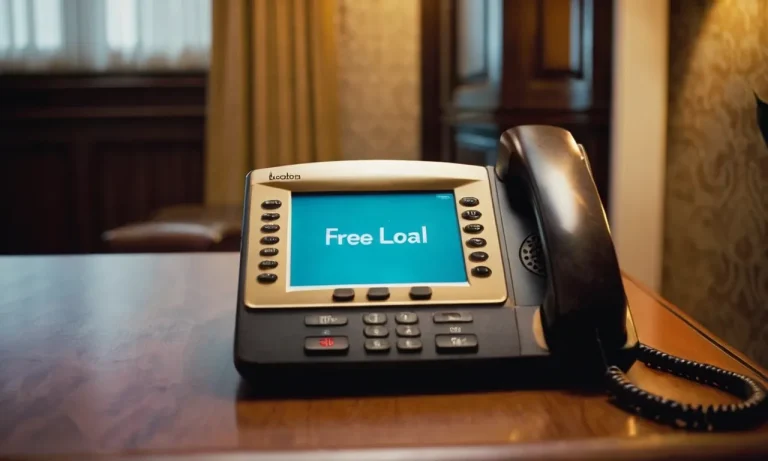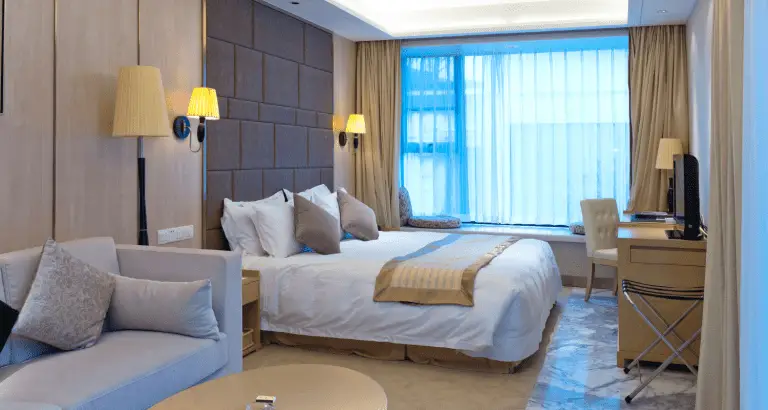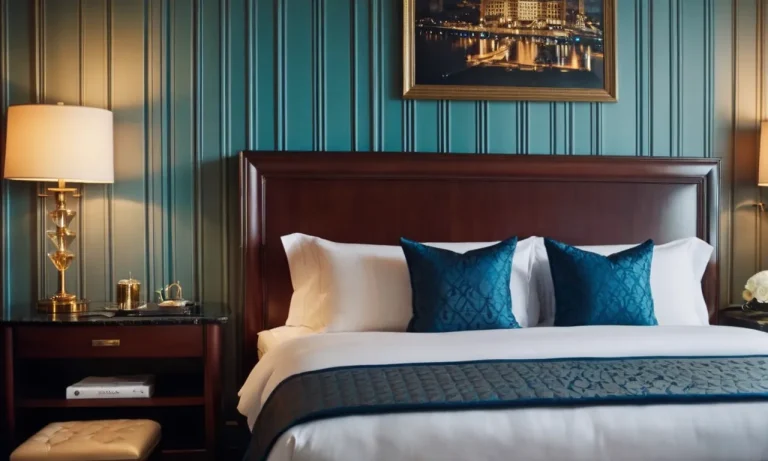How Much Does It Cost To Rent A Hotel Conference Room?
Hosting a successful event or meeting often requires finding the perfect venue, and hotel conference rooms can be an excellent choice. However, determining the cost of renting a hotel conference room can be a daunting task, with various factors influencing the final price tag.
If you’re short on time, here’s a quick answer to your question: The cost of renting a hotel conference room can range from a few hundred dollars to several thousand dollars per day, depending on factors such as the hotel’s location, size of the room, amenities included, and the duration of the rental.
In this comprehensive guide, we’ll explore the key elements that impact the cost of renting a hotel conference room, provide tips for negotiating better rates, and offer insights into maximizing your budget while securing the ideal venue for your event.
Location and Hotel Rating
The cost of renting a hotel conference room can vary greatly depending on several factors, with location and hotel rating being two of the most significant. 😎 Let’s dive into these key elements and explore how they impact pricing.
City and Neighborhood
The city and neighborhood where the hotel is situated play a crucial role in determining the rental cost of a conference room. Generally, hotels in major metropolitan areas like New York, Los Angeles, or Chicago tend to charge higher rates compared to those in smaller cities or suburban areas.
This is due to the high demand for meeting spaces in bustling business districts and the overall cost of living in these urban centers. For instance, according to a report by Business Travel News, the average cost of renting a hotel conference room in New York City can range from $1,500 to $5,000 per day, while in smaller cities like Indianapolis, the average cost is around $500 to $1,500 per day.
Hotel Star Rating
The star rating of a hotel is another significant factor influencing conference room rental costs. Luxury hotels with higher star ratings, such as five-star or four-star properties, typically command premium prices for their meeting spaces.
These upscale hotels offer state-of-the-art amenities, superior service, and prestigious locations, justifying their higher rates. On the other hand, budget-friendly hotels with lower star ratings often provide more affordable options for conference room rentals.
However, it’s important to note that even within the same star rating, prices can vary based on the hotel’s reputation, brand, and overall quality.
Proximity to Attractions and Transportation
The proximity of a hotel to popular attractions, business districts, and transportation hubs can also influence the cost of renting a conference room. Hotels located near major tourist destinations, convention centers, or easily accessible by public transportation or airports tend to charge higher rates for their meeting spaces.
This is because these locations are in high demand and offer convenience for attendees. For example, according to Cvent, a hotel conference room rental near a major airport or convention center can cost up to 20% more than a similar venue located in a less desirable area.
To sum it up, when considering the cost of renting a hotel conference room, it’s essential to factor in the location, hotel star rating, and proximity to attractions and transportation. 👏 While these elements can significantly impact the price, they also play a crucial role in ensuring a successful and memorable event for attendees.
Room Size and Capacity
When it comes to renting a hotel conference room, the size and capacity of the space play a crucial role in determining the overall cost. These factors directly impact the number of attendees you can accommodate and the layout options available. Let’s dive into the details:
Square Footage
The square footage of a conference room is a fundamental consideration. Larger rooms typically command higher rental fees due to their ability to host more people and accommodate various seating arrangements.
According to a study by MeetingSource, the average cost per square foot for a conference room in a major city can range from $0.50 to $2.00 or more. It’s essential to assess your anticipated attendance and ensure that the room size aligns with your needs, as cramped spaces can negatively impact the overall experience.
Maximum Occupancy
Hotels typically provide the maximum occupancy for their conference rooms, which is determined by factors such as square footage, fire codes, and safety regulations. This information is crucial when estimating the cost, as exceeding the maximum capacity may result in additional fees or even legal consequences.
It’s advisable to have a buffer and book a room with a slightly higher capacity than your expected attendance to accommodate any last-minute additions or unforeseen circumstances.
Layout and Seating Arrangements
The layout and seating arrangements of a conference room can significantly impact the overall cost. Hotels often offer various configurations, such as theater-style, classroom-style, or banquet-style setups.
Each arrangement has its own pricing structure, with more elaborate setups (e.g., U-shaped or hollow square) typically costing more due to the additional labor and equipment required. It’s essential to communicate your preferred layout to the hotel in advance to ensure accurate pricing and avoid any surprises.
😊
Additionally, some hotels may charge extra fees for specific seating arrangements or equipment rentals, such as chairs, tables, or audiovisual equipment. Be sure to inquire about these potential additional costs upfront to avoid any unexpected expenses. According to Cvent’s survey, the average cost for a standard classroom-style setup can range from $200 to $800 per day, depending on the hotel and location.
Amenities and Services
When renting a hotel conference room, the amenities and services offered can significantly impact the overall cost. These additional features can enhance the event experience and ensure its success, but they also come with added expenses.
Audio/Visual Equipment
Most conference rooms provide basic audio/visual equipment, such as a projector, screen, and microphones. However, for more advanced setups, you may need to rent additional equipment like high-definition projectors, professional sound systems, or video conferencing technology.
According to a study by Meetings & Conventions, the average cost for AV equipment and services can range from $500 to $5,000 or more, depending on the complexity of your requirements.
Catering and Dining Options
Hotel catering services can be a significant expense when renting a conference room. While some hotels offer complimentary coffee and tea, you’ll typically need to pay for full catering services, such as breakfast, lunch, or dinner.
The cost can vary widely based on the menu selections, the number of attendees, and the level of service desired. According to The Balance Small Business, the average catering cost for a full-day meeting ranges from $45 to $90 per person. 😋
- Coffee breaks: $10 – $20 per person
- Breakfast: $15 – $30 per person
- Lunch: $20 – $50 per person
- Dinner: $30 – $80 per person
Staffing and Event Support
Many hotels offer staffing and event support services to ensure your conference runs smoothly. This can include event coordinators, tech support, and on-site staff to assist with setup, registration, and other logistical needs.
The cost of these services can vary greatly depending on the size and complexity of your event. According to Event Manager Blog, the average cost for event staff can range from $20 to $50 per hour, per staff member. 👏
It’s essential to carefully consider your needs and budget for these additional amenities and services when renting a hotel conference room. By understanding the potential costs upfront, you can make informed decisions and ensure a successful event that meets your expectations and stays within your budget.
Don’t hesitate to negotiate with the hotel for package deals or discounts, especially for larger events or during off-peak seasons.
Duration and Timing
The cost of renting a hotel conference room can vary significantly depending on the duration and timing of your event. Most hotels offer flexible pricing options, allowing you to choose between daily or hourly rates, as well as accounting for peak and off-peak seasons and weekday versus weekend pricing.
Daily vs. Hourly Rates
Many hotels provide daily rates for conference room rentals, which can be more cost-effective if you need the space for an extended period, such as a multi-day conference or training session. However, if your event is shorter, hourly rates may be a better option.
According to a survey by MeetingSource, the average hourly rate for a conference room in the United States ranges from $50 to $150, depending on the hotel’s location and amenities.
Peak vs. Off-Peak Seasons
Like other aspects of the hospitality industry, conference room rental rates often fluctuate based on peak and off-peak seasons. During peak seasons, such as summer months or major holidays, hotels tend to charge higher rates due to increased demand.
Conversely, off-peak seasons typically offer lower rates to attract more business. For example, Hyatt Hotels lists seasonal pricing variations of up to 30% for their conference facilities.
- Peak Season (e.g., Summer): $150/hour
- Off-Peak Season (e.g., Winter): $100/hour
Weekday vs. Weekend Pricing
Similarly, many hotels adjust their conference room rental rates based on weekday versus weekend pricing. Weekday rates are typically higher, as these are prime times for business events and meetings. Weekend rates, on the other hand, are often discounted to attract social events and smaller gatherings.
According to a study by Cvent, the average weekday rate for a conference room in a major U.S. city is around $500, while the average weekend rate is closer to $300. 😊
| Day | Average Rate |
|---|---|
| Weekday | $500 |
| Weekend | $300 |
By understanding these pricing factors, you can strategically plan your event to take advantage of the most cost-effective options based on your specific needs and budget. Don’t be afraid to negotiate with the hotel, as they may be willing to offer discounts or package deals, especially during slower periods.
👍
Conclusion
Renting a hotel conference room can be a significant investment, but with careful planning and consideration of the factors discussed in this guide, you can find a venue that meets your needs while staying within your budget.
Remember to negotiate rates, explore package deals, and consider off-peak times or alternative venues if your budget is limited. By understanding the key elements that influence the cost of renting a hotel conference room, you’ll be better equipped to make an informed decision and ensure a successful event or meeting.








